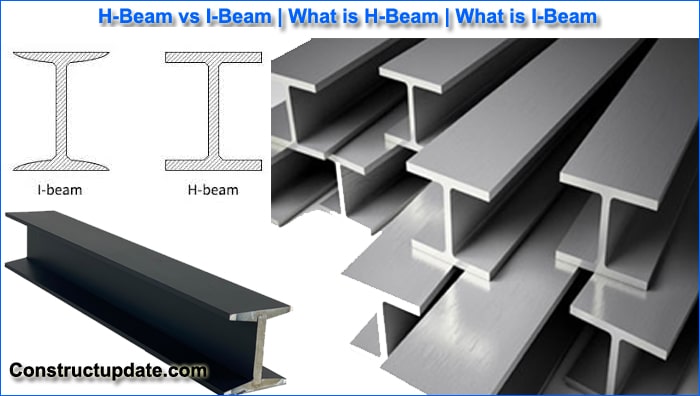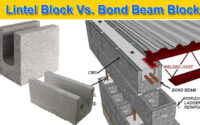H-Beam vs I-Beam | What is H-Beam | What is I-Beam | Difference Between H-Beam and I-Beam
Since the Rand Mcnally Building, the first structure with a steel frame, was built in 1890, structural steel has been widely used in the construction of commercial structures. This article will guide you on the differences between H-Beam and I-Beam.
Since then, significant construction projects have utilised steel. Steel is significantly simpler to employ because it is readily available.
First off, it adheres effectively to concrete and has a variety of qualities that make it even superior to concrete for construction tasks.
Steel is still one of the most often used building materials because it is quick to create and offers the ideal balance of light weight, great strength, and simplicity of manufacture.
It has played a significant role in commercial construction initiatives. Speaking of steel, H and V beams are two of the most widely utilised structural components for supporting walls and buildings in construction. Let’s examine these two structural components.

What is an H-Beam?
The shape of an H-beam is just like an H. A structural beam composed of rolled steel is called an H-beam. It is really powerful. Its name refers to the way its cross-section resembles a letter H.
What is an I-Beam?
The form of an I-beam resembles an I. Two horizontal planes, referred to as flanges, are joined by one vertical component, known as the web, to form the I beam. The name “I-beam” comes from the fact that it resembles a capital “I” when viewed from its cross-section and has tapering edges. With an I-beam, the cross section’s height is more than the flange’s width.
Difference Between H-Beams and I-Beams
H-Beams
- Steel beams are known as “H-Beams” are rolled steel structures shaped like the letter “H”. They are created in the form of built-up units. The H-section is created by welding the flanges to the web. Wide flange beams are another name for H-beams.
- Compared to I-beams, H-beams feature thicker webs. The larger thickness of H-beams strengthens them.
The flanges on an H-beam are identical in thickness and run parallel to one another. They are heavier, wider, and longer than I-beams. - I-beams and H-beams both have optimised cross-sections, but H-beams have a slightly greater strength-to-weight ratio or strength per unit area. They are stronger because they have a larger cross-sectional surface area.
- Wider H-beam flanges have higher moments of inertia and lateral rigidity. As a result, they are more resistant to bending than I-beams.
- For spans up to 330 feet that can be constructed to any size and height, H-beams are employed.
- I-beams are lighter than H-beams in weight.
- Both tensile and direct loads can be supported by an H-beam segment. It can handle twisting loads thanks to its wide cross-section.
- H-beams act as load-bearing columns for platforms, bridges, and other structures like commercial buildings. Wide flange beams are widely used in residential construction.
I-Beams
- Steel is formed into I-shaped beams known as I-Beams by milling or rolling the metal. It is manufactured entirely out of a single piece of aluminium or metal.
- I-beams have a thinner web than H-beams.
- I-beam flanges are tapered with a 1:10 inclination for increased load-bearing capability. They are thinner than the flanges of an H-beam.
- I-beams often have a cross-section that is deeper in height than in width, which makes them resistant to local buckling.
- I-beams are less effective at resisting bending than H-beams because of their lower moment of inertia.
- 33 to 100 foot spans are covered by I-beams.
- I-beams are less heavy than H-beams.
- I-beams can sustain tensile and direct stresses. However, because of their tiny cross-sections, they are unable to handle twisting stresses.
- I-beams are appropriate for use in the construction of support frames and columns for hoists, elevators, trailers, trolleyways, and structural steel buildings.
Weight
H-beam: The H-beam can withstand more stress since it is frequently heavier than the I-beam.
I-beam: The I-beam may be preferable in certain structures where weight and force on a wall could cause a structural problem because it is frequently lighter.
Center Web
H-beam: Because the middle web of an H-beam is thicker, it is frequently stronger.
I-beam: Since an I-beam frequently has a thinner central web than an h-beam, it frequently cannot withstand as much stress.
Built-Up
H-beam: An H-beam may be built up, meaning it may be built up to any height or dimension.
I-beam: Only the amount that the milling machinery used by the manufacturer permits can be added to an I-beam.
Spans
H-beam: The usage of H-beams is possible for spans up to 330 feet.
I-beam: For spans between 33 and 100 feet, an I-beam can be employed.
Flanges
H-beam: Compared to the flanges on I-beams, the top and bottom flanges of H-beams protrude wider from the web.
I-beam: I-beams are less wide and shorter than H-beams, and they have top and bottom flanges.
Number of Pieces
H-beam: Although the H-beam appears to be made of only one piece of metal, three pieces of metal really join at a bevel.
I-beam: An I-beam is constructed entirely of one piece of metal and is not created by welding or riveting metal sheets together.
Since they have higher mechanical properties than I-beams, H-beams are considered to be a more affordable option for construction. While H-beams are often used as load-bearing columns, I-beams are typically used as beams.
What Are I-Beams Used For?
I-beams are used for several significant purposes in the structural steel construction sector. They are frequently employed in constructions as the primary framework or as crucial support trusses. Steel I-beams provide unwavering strength and support to guarantee a structure’s integrity. The enormous strength of I beams eliminates the need for several support structures, saving time and money and improving the stability of the structure. Every builder values I-beams because of their adaptability and dependability.
Beams, which are frequently referred to as “I” beams due to their shape, offer excellent load carrying support when utilised horizontally or standing as columns. I-beams are the preferred shape for structural steel construction because of the I-exceptional beam’s versatility in managing a range of loads. I-beams are ideal for unidirectional bending parallel to the web because of their form. The web resists shear stress, but the horizontal flanges resist bending movement.





